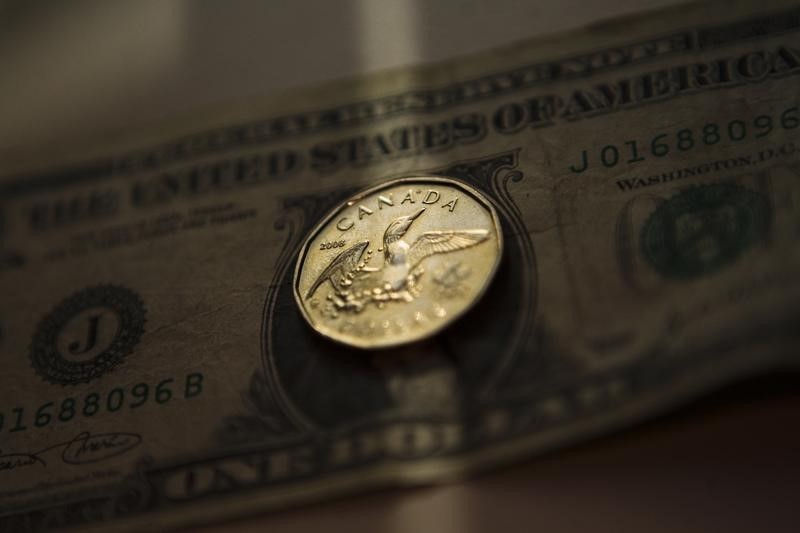Investing.com - The U.S. dollar rose against its Canadian counterpart on Wednesday, helped by the release of positive U.S. durable goods orders data and as lower oil prices weighed on demand for the commodity-related Canadian currency.
USD/CAD hit 1.3516 during early U.S. trade, the pair’s highest since November 18; the pair subsequently consolidated at 1.3508, gaining 0.50%.
The pair was likely to find support at 1.3373, Tuesday’s low and a two-week low and resistance at 1.3515, Monday’s high.
The U.S. Commerce Department said durable goods orders climbed 4.8% last month, compared to expectations for a gain of 1.5%.
Core durable goods orders, which exclude volatile transportation items, rose 1% last month, compared to a forecast increase of 0.2%.
On a less positive note, the U.S. Department of Labor said initial jobless claims in the week ending November 19 increased by 18,000 to251,000 from the previous week’s total of 233,000 (initially 235,000). Analysts had expected jobless claims to rise by 15,000 to 250,000 last week.
The greenback has remained supported amid expectations that President-elect Donald Trump’s plans to ramp up fiscal spending and cut taxes will spur economic growth and inflation.
Faster growth would spark inflation, which in turn would prompt the Fed to tighten monetary policy a faster rate than had previously been expected.
The U.S. dollar has also been boosted by bets that the U.S. central bank will almost certainly raise interest rates next month.
Fed Chair Janet Yellen on Thursday reiterated that a rate hike “could well become appropriate relatively soon.”
Meanwhile, the Canadian dollar weakened as oil prices turned lower amid growing doubts over the possibility for an OPEC-led production freeze deal and as investors awaited the weekly report on U.S. stockpiles due later in the day.
The loonie was higher against the euro, with EUR/CAD slipping 0.17% to 1.4258.
